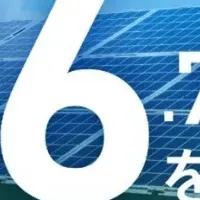
Huawei Digital Power Hosts Groundbreaking Security Forum to Enhance ESS Ecosystem
Huawei Digital Power Hosts the ESS Safety Forum
On June 12, 2025, Huawei Digital Power convened an influential forum in Shanghai, dedicated to discussing the future of Energy Storage Systems (ESS) and their integration into the energy grid. This event brought together industry leaders, partners, insurers, and certification organizations to explore the latest trends in grid-forming technology and its application within the ESS safety ecosystem.
During the opening remarks, Steven Zhou, Head of Smart PV and ESS Product Line at Huawei Digital Power, emphasized the critical role of ESS in supporting the large-scale integration of renewable energy into the grid. He pointed out that this integration presents not only unprecedented opportunities but also challenges. As a result, grid-forming ESS has emerged as a prominent technology, capable of superb grid support. The primary focus of the forum was to enhance ESS security, deemed an essential priority for sustainable industry development.
To support this goal, Huawei Digital Power unveiled the new FusionSolar 9.0 Smart PV+ESS solution, which promotes comprehensive applications of grid-forming technology across various scenarios. The company outlined four essential security standards that must be met: non-flammable, non-explosive, non-leakage, and non-hazardous. By integrating security design from the cell level to the grid, Huawei aims to bolster the reliability of system operations.
Advancing the dialogue on active safety strategies and accelerating the construction of new power systems, Robert Liew, Director of Research at Wood Mackenzie APAC, and Patrick Zank, Business Development Manager at VDE, shared insights on how grid-forming technology can facilitate renewable energy investments. They highlighted the importance of unified standards to foster market confidence and encourage large-scale deployments.
Addressing technical challenges in ESS implementation, experts including Vannsith Ith, Director of SchneiTec Power Management, and Billy Qiu, Technical Director of TÜV SÜD Smart Energy, presented details on Cambodia’s first utility-scale ESS project. TÜV SÜD conducted experimental tests on Huawei's grid-forming PV+ESS system in compliance with PPP 58232, showcasing promising developments for stable, reliable smart grid establishment in Southeast Asia.
Chen Danqing, CTO of Huawei Digital Power's Grid-Forming ESS Unit, also discussed the critical technical challenges faced in large-scale commercial applications of grid-forming technology. He identified multiple device parallel operation stability, wide-band oscillation damping, and robust overload support as central issues that need addressing. Huawei proposed the Smart String Grid-Forming ESS technology system, designed to redefine core standards for grid-forming capabilities throughout the energy production, transmission, distribution, and consumption cycle.
This innovative system not only meets the performance levels required under various grid conditions but also ensures deterministic and stable support for diverse business models in the power sector. Notably, the Smart String Grid-Forming ESS has undergone rigorous testing in projects located in Qinghai and Xizang, achieving successful outcomes in GW scale applications.
As part of their commitment to promote security in the ESS sector, Huawei Digital Power launched the ESS Safety Initiative in collaboration with customers and industry partners. The initiative aims to enhance fire protection specifications unique to ESS, encourage the global promotion of security standards, and establish a risk assessment system throughout the lifecycle of ESS projects. The overarching goal is to protect the future of energy by laying a secure foundation to advance ESS safety to new heights.
Combining high density, high voltage, and high current features, ESS systems inherently face significant security risks, including electrochemical inconsistencies and inadequate digital management capabilities. To mitigate these risks, Huawei introduced an innovative security system integrating the 'Panshi' battery pack design with a two-phase series architecture and intelligent health diagnostics.
The battery pack is meticulously designed to serve as the minimum security unit, utilizing a three-level insulation system to prevent thermal propagation and fire during thermal runaway events. This architecture effectively hinders current feedback and maintains stable active power during high and low voltage transitions, ensuring the rapid recovery of the stability of the power grid.
In addition, an advanced digital management platform enhances safety visibility and control, providing fault alerts up to seven days in advance and identifying over 30 types of faults with real-time monitoring. Successfully collaborating with international authority DNV, Huawei has verified the security protection capabilities of the Smart String Grid-Forming ESS through rigorous over-fire tests in various scenarios.
During the forum, demonstrations of safety tests such as nail penetration, immersion in water, and thermal runaway were conducted at Huawei's Dongguan Grid-Forming ESS Comprehensive Lab. The results affirmed the safety performance of the system across four fundamental safety standards, ensuring compliance with grid-friendly, load-friendly, and environmentally friendly criteria.
Huawei Digital Power remains committed to delivering PV+ESS solutions that contribute to a sustainable and green future. By fostering collaboration across the industry chain, the company continues to drive innovations that enhance safety and performance in the ESS landscape.
Topics Energy)










【About Using Articles】
You can freely use the title and article content by linking to the page where the article is posted.
※ Images cannot be used.
【About Links】
Links are free to use.